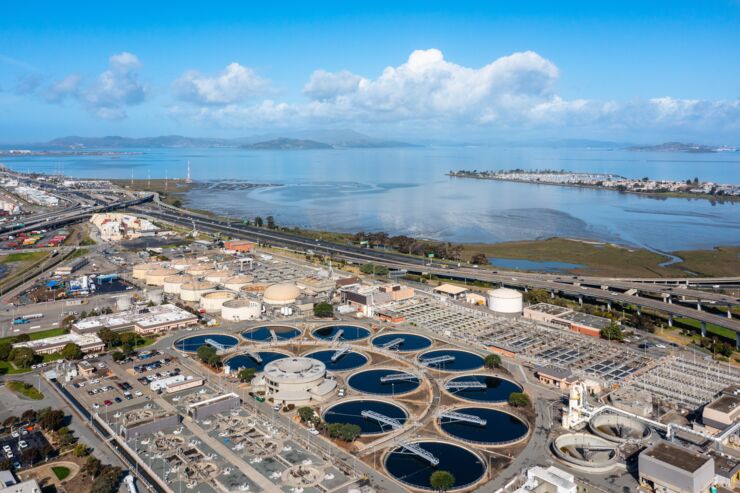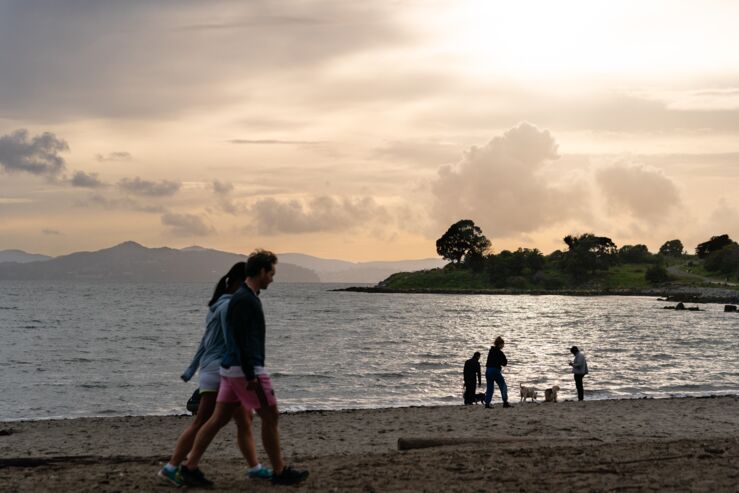A key part of EBMUD’s mission is protecting the San Francisco Bay. Every day, waste from nearly 740,000 East Bay residents and businesses flows into EBMUD’s Wastewater Treatment Plant in Oakland where it is treated before it’s discharged offshore. Our plant is great at removing solids, pathogens and pollutants from the water sent down your drains. Our processes protect public health and support a vibrant bay ecosystem.
One challenging area where we are making significant improvements is in reducing the levels of nitrogen compounds in treated wastewater that may contribute to harmful algal blooms.

A harmful algal bloom (HAB) is an excessive proliferation of freshwater or marine algae, such as the species Heterosigma akashiwo, that causes negative impacts on other organisms. Although uncommon in the San Francisco Bay, such blooms can lower the level of dissolved oxygen in seawater, produce toxins and kill local fish.
Impact of nutrients and ongoing research in the Bay Area
Treated wastewater and agricultural runoff are two significant sources of nutrients, such as nitrogen, in the bay. Just as these nutrients are used in fertilizers to feed plants, they can accelerate algae growth in the bay and contribute to HABs.
But more research is needed to identify the specific conditions or triggers that cause HABs. Ongoing studies conducted by the U.S. Geological Survey (USGS), San Francisco Estuary Institute (SFEI), and others seek to better understand these events and prevent future occurrences.
EBMUD contributes to these scientific studies and collaborates with regulatory agencies to ensure that ratepayer dollars invested in any future nutrient removal infrastructure achieve the desired benefits for the bay ecosystem.
EBMUD is also conducting its own research to learn more about H. akashiwo. That species formed a HAB, or “red tide,” in the bay in 2022 that caused a massive fish kill, as well as a much more muted HAB in 2023. We are working directly with experts in the field to conduct experiments to understand what allows this species to outcompete all other algae in the bay.
We’re also testing how EBMUD can best control H. akashiwo. The application of environmentally friendly clays and plantings of seagrass, for example, can help to safely limit the proliferation of algae that cause HABs.
EBMUD continues to work closely with the San Francisco Regional Water Quality Control Board and others to better understand how to prevent future HABs effectively and safely.

Since 2014, EBMUD, along with the 37 Bay Area wastewater treatment agencies that comprise the Bay Area Clean Water Agencies (BACWA), has been under a regional watershed permit to address nutrient discharges from wastewater treatment plants.
Through years of experimentation, EBMUD has developed a first-of-its kind biological treatment process to significantly cut nitrogen in discharges from our wastewater treatment plant. Our staff have modified operations and existing infrastructure to grow bacteria that break down inorganic nitrogen compounds such as ammonia, nitrite and nitrate, that are common in wastewater.
By the end of 2025, EBMUD expects to reduce nitrogen levels in wastewater discharge by up to 65 percent.
On top of delivering environmental benefits, this example of EBMUD ingenuity could save ratepayers $2 billion that might have otherwise been needed to install a traditional treatment process for removing nitrogen.